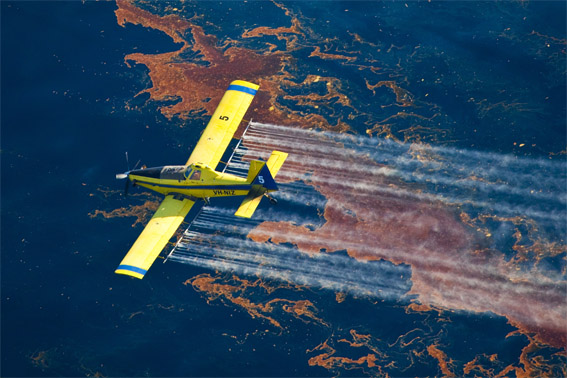Submitted by Anne Landman on
 The Washington Post published a misleadingly-titled article June 30 about the environmental effects of dispersants BP is using in the Gulf. The Post article's headline reads,"Oil dispersant does not pose environmental threat, early EPA findings suggest." But neither the body of the article, nor the Environmental Protection Agency's's press release about studies the agency hastily performed on eight dispersants, indicates that there is no environmental threat from using them. The agency also gives no assurance about using dispersants in the quantities BP is applying them. EPA's June 30 press release about the studies says "dispersants are generally less toxic than oil," but does not suggest dispersants pose no environmental threat. The EPA's testing was also very limited. The agency only tested for short-term endocrine-disrupting activity of the dispersants, only tested dispersants alone (not mixed with oil, as they are in the Gulf), and tested the chemicals only on mature life forms and not young life forms, like juveniles and larvae, which are more vulnerable to the effects of chemicals. EPA also studied only very short-term exposures. The agency admits that "additional testing is needed to further inform the use of dispersants." Questions remain about why the federal government is allowing BP to engage in such widespread use of toxic chemicals in the ocean in the absence of any clear data showing it is harmless, and why the Washington Post article had such a spurious title.
The Washington Post published a misleadingly-titled article June 30 about the environmental effects of dispersants BP is using in the Gulf. The Post article's headline reads,"Oil dispersant does not pose environmental threat, early EPA findings suggest." But neither the body of the article, nor the Environmental Protection Agency's's press release about studies the agency hastily performed on eight dispersants, indicates that there is no environmental threat from using them. The agency also gives no assurance about using dispersants in the quantities BP is applying them. EPA's June 30 press release about the studies says "dispersants are generally less toxic than oil," but does not suggest dispersants pose no environmental threat. The EPA's testing was also very limited. The agency only tested for short-term endocrine-disrupting activity of the dispersants, only tested dispersants alone (not mixed with oil, as they are in the Gulf), and tested the chemicals only on mature life forms and not young life forms, like juveniles and larvae, which are more vulnerable to the effects of chemicals. EPA also studied only very short-term exposures. The agency admits that "additional testing is needed to further inform the use of dispersants." Questions remain about why the federal government is allowing BP to engage in such widespread use of toxic chemicals in the ocean in the absence of any clear data showing it is harmless, and why the Washington Post article had such a spurious title.

Comments
Anglesey replied on Permalink
Dispersant lesser evil